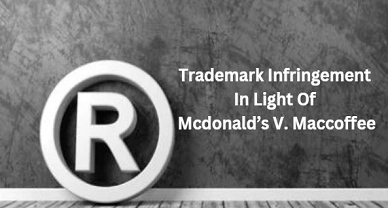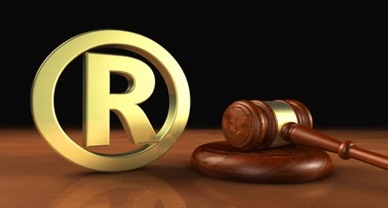Analysing Trademark Infringement In Light Of Mcdonald’s V. Maccoffee
Introduction
To be eligible for registration in India, a trademark must be distinctive and not confusingly similar to any existing trademarks: it must also not be deceptive or misleading, or contrary to public policy or morality Once a trademark is registered, the owner has the exclusive night to use the mark in relation to the goods or services for which it is registered. This means that no one else can use the same or a confusingly similar mark in relation to the same or similar goods or services without the owner’s permission.
The process for registering a trademark in India begins with the filing of an application with the Intellectual Property India (IPI), the national trademark office. The application must include the details of the applicant, the class of goods or services for which the trademark will be used, and a representation of the trademark.
Once the application is filed, it will be examined by the IPI to ensure that it meets the requirements for registration. If the trademark is found to be eligible, it will be published in the Trademarks Journal, and any interested party will have a chance to oppose the registration.
If there are no oppositions, or if the opposition is unsuccessful, the trademark will be registered, and a certificate of registration will be issued. A registered trademark is valid for a period of 10 years, after which it can be renewed for additional 10-year periods.
Trademark Infringement
Trademark infringement is the unauthorized use of a trademark that is identical or similar to a registered trademark, without the permission of the trademark owner. Trademark infringement can occur in various forms, including the use of the trademark on competing goods or services, the use of the trademark in advertising or marketing materials, or the sale of counterfeit goods bearing the trademark.
[Image Sources: Shutterstoock]
Trademark infringement can cause damage to the reputation and brand value of the trademark owner, and can also lead to confusion among consumers, who may mistake the infringing goods or services for those of the trademark owner.
To prove trademark infringement, the trademark owner must show that they own a valid and legally protectable trademark, and that the defendant has used a confusingly similar trademark on competing goods or services. The trademark owner must also show that they have suffered, or are likely to suffer, damages as a result of the infringement.
If a trademark owner believes that their trademark rights have been infringed, they may file a suit for trademark infringement in a court of law. The court will consider the evidence presented by both sides and decide whether the defendant’s use of the trademark is infringing on the rights of the trademark owner. If the court finds in favour of the trademark owner, it may issue an injunction to stop the infringing activity and award damages to the trademark owner.
Understanding trademark infringement through the lens of McDonald’s Corporation v. MacCoffee Limited
In this case, McDonald’s Corporation, a well-known fast-food chain, alleged that MacCoffee Limited, a Russian company, was infringing on its trademark rights by using a similar name and logo for its coffee shops in India. McDonald’s argued that the use of the “Mac” prefix and the golden arches logo by MacCoffee was likely to cause confusion among consumers and dilute the distinctive character of its trademark.
The court found in favour of McDonald’s, holding that MacCoffee’s use of the “Mac” prefix and golden arches logo was likely to cause confusion among consumers and was therefore infringing on McDonald’s trademark rights. The court issued an injunction to stop MacCoffee from using the infringing trademark and ordered the company to pay damages to McDonald’s.
This case illustrates how a trademark owner can seek legal remedies to stop the unauthorized use of their trademark and protect their intellectual property rights. It also shows the importance of conducting proper trademark searches and clearance before launching a new brand or product, to ensure that it does not conflict with existing trademarks.
Conclusion
In conclusion, trademark laws in India provide for the registration and protection of trademarks, as well as the procedures for the infringement and opposition of trademarks. These laws ensure that businesses and individuals can secure their intellectual property rights and prevent the unauthorized use of their trademarks. Trademark law in India is constantly evolving, and it is important for businesses to stay up-to-date on the latest developments in order to effectively protect and enforce their trademark rights.
In addition to pursuing legal remedies, trademark owners may also try to resolve trademark infringement disputes through alternative dispute resolution methods such as mediation or arbitration. These methods can often be faster and less costly than going to court, but the parties must agree to use them, and the decisions are usually not appealable.
Author: Kaustubh Kumar, A Student at the National University of Study and Research in Law, Ranchi, in case of any queries please contact/write back to us at support@ipandlegalfilings.com or IP & Legal Filing
References:
https://www.financialexpress.com/industry/mcdonalds-wins-eu-maccoffee-trademark-dispute/307758/
https://www.indiafilings.com/learn/trademark-registration-process/#:~:text=Trademark%20application%20can%20be%20filed,Logo%20or%20the%20Trademark
https://cleartax.in/s/trademark-infringement-india



